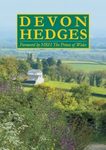"Updates from the first edition, published in 2012, include a diversification of perspectives and case studies, an in-depth assessment of the new restoration standards published by the Society for Ecological Restoration in 2019, and a revision of future projections for the field. Overall, this work is a meta-view of ecological restoration, throughout asking why we restore and highlighting the role of human choices in restoration. Students of restoration ecology and conservation biology, restoration practitioners, and those interested in human relationships with land would all be well served to engage with this work."
– Rebecca Tonietto, Restoration Ecology 32(4)
Reviews of the first edition:
"I would recommend this book to anyone who is already involved with ecological restoration, about to become involved or who has a relevant policy interest. It is a well considered and balanced perspective of the field"
– John Hopkins, Bulletin of the British Ecological Society
"Ecological Restoration and Environmental Change is an engaging introduction to the science of restoration ecology, providing examples, pointing out problems, and proposing new ways to think about ecological restoration in an era of climate change and invasive species."
– Cheryll Glotfelty, University of Nevada, in PULSE
"Ecological Restoration and Environmental Change: Renewing Damaged Ecosystems is filled with excellent easy-to-read case studies that provide good background information for both the academic and the student. Whether someone has a casual interest in the human decisionmaking ethics surrounding ecological restoration, someone needs to manage an ecosystem restoration budget, or someone is a natural resource scientist, Ecological Restoration and Environmental Change: Renewing Damaged Ecosystems is a must-have addition to their professional library."
– Gabriel Thoumi, CFA, Mongabay.com
"This clearly written book provides an excellent overview of the field of ecological restoration [...] This relatively new area of study is thoroughly covered in two chapters; the first addresses how the rapidity of climate change might (and already does) adversely affect ecosystems, and the second covers the subject of managing novel ecosystems through adaptive management. Together, these chapters are a valuable addition to restoration ecology literature. Though written for a well-informed general audience with some knowledge of restoration ecology, this book would be a strong addition to undergraduate or graduate-level courses in restoration theory and practice. Summing Up: Highly recommended"
– D. Goldblum, CHOICE
"Because of its richness in theoretical knowledge, Allison's book is strongly recommended to a broad circle of environmental scientists and practitioners, not necessarily those who are involved in restoration themselves. Students and other beginners should also appreciate it."
– Dmitry A. Ruban, Rostov am Don, Paläontologie Allgemein



































